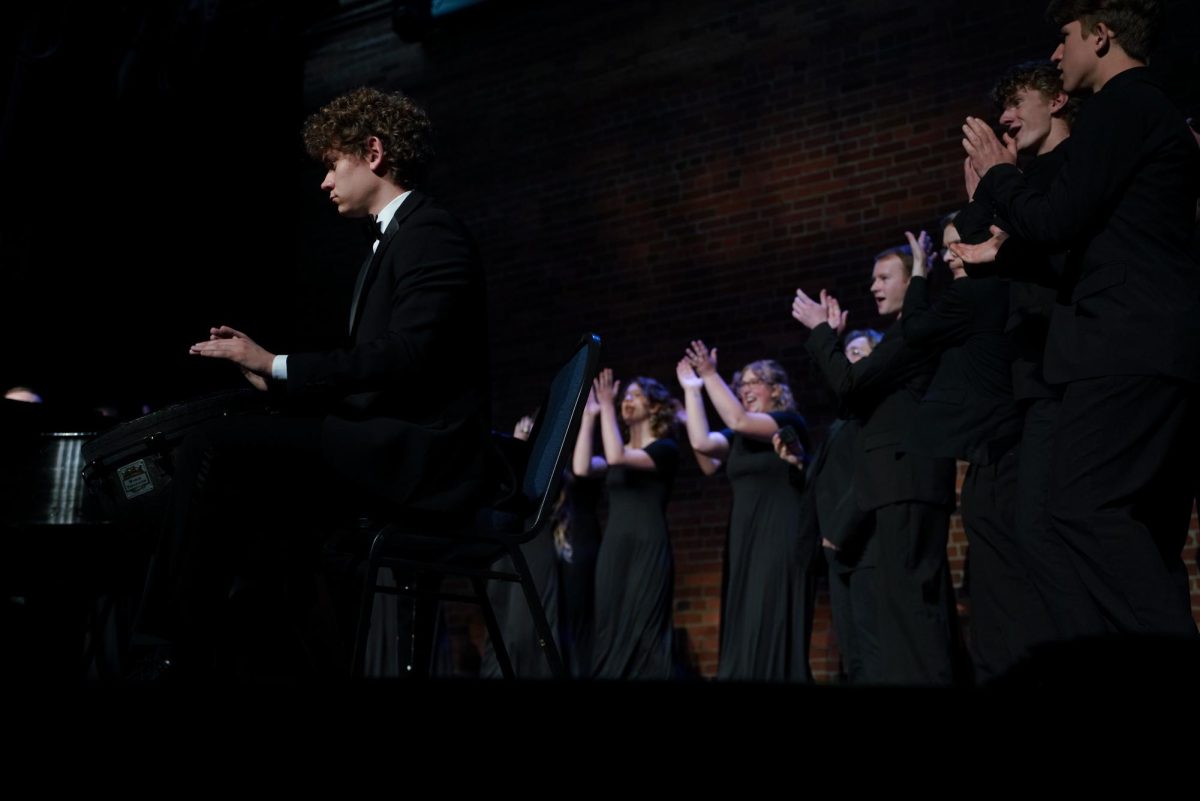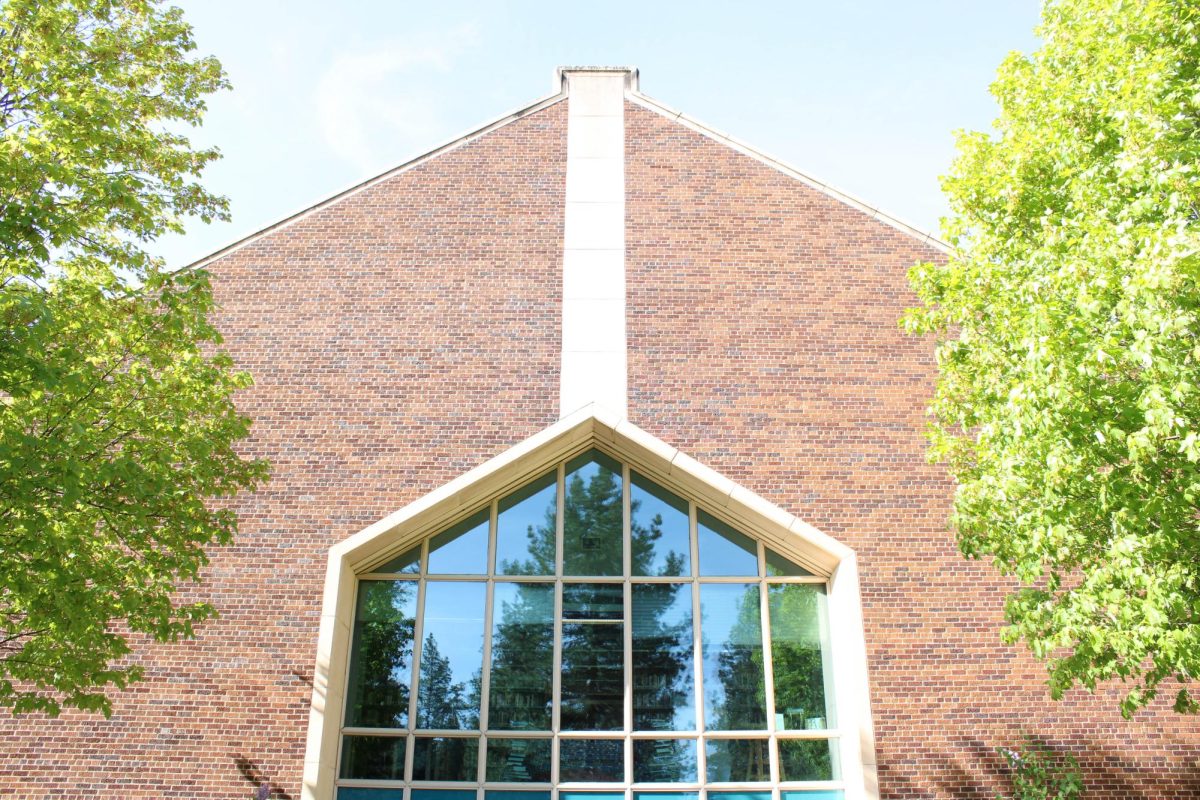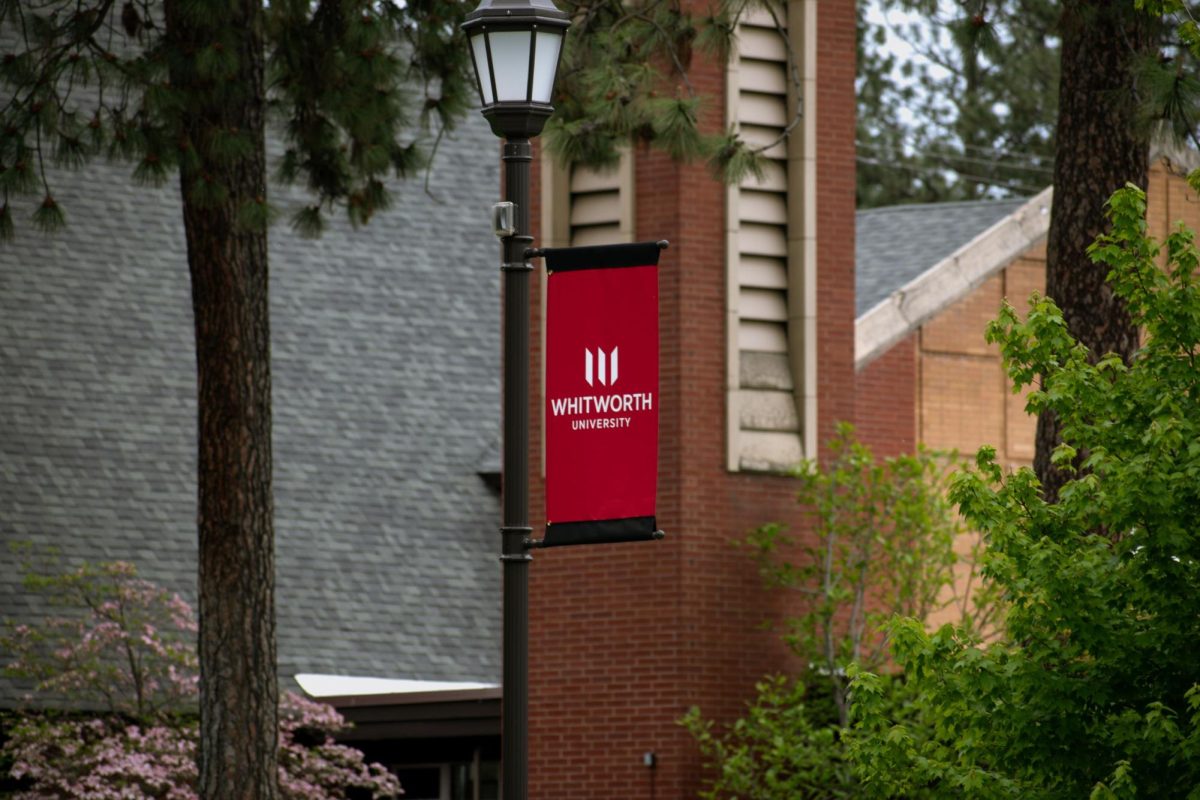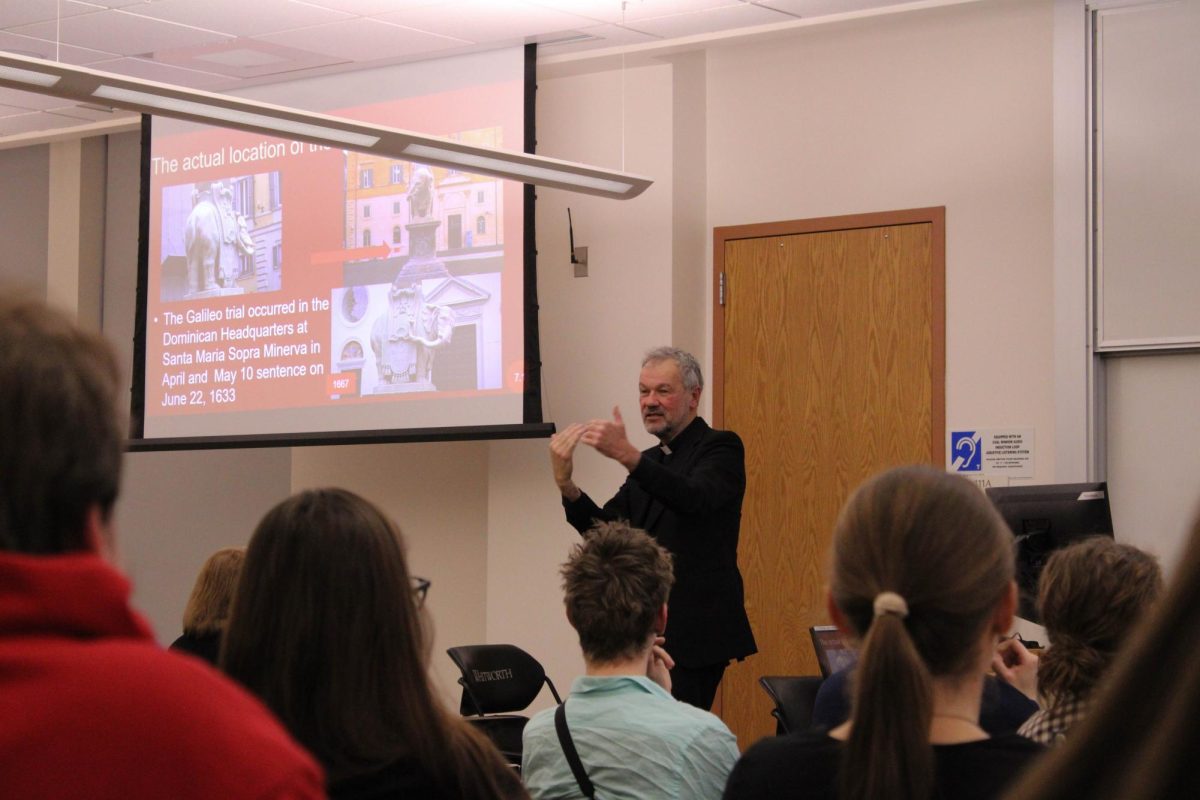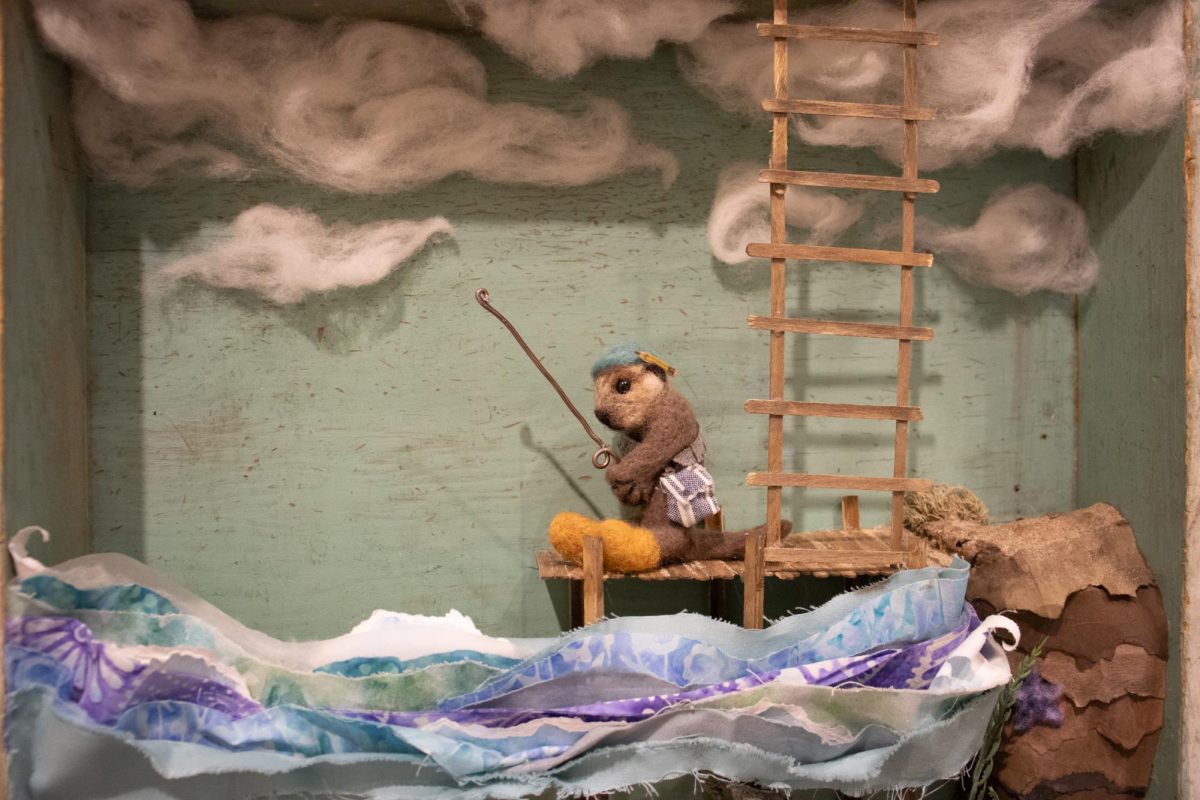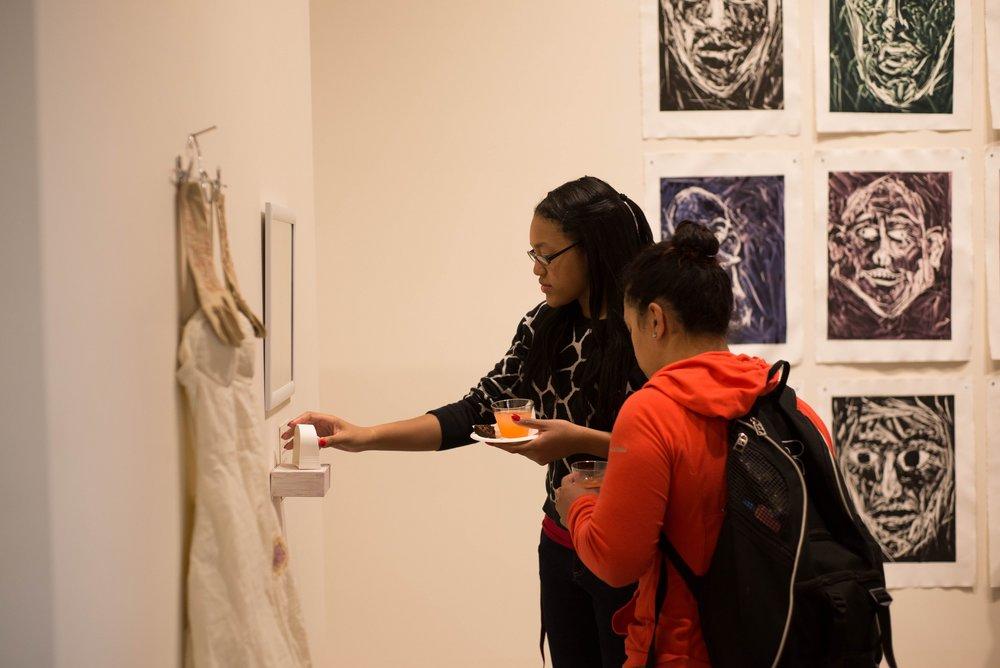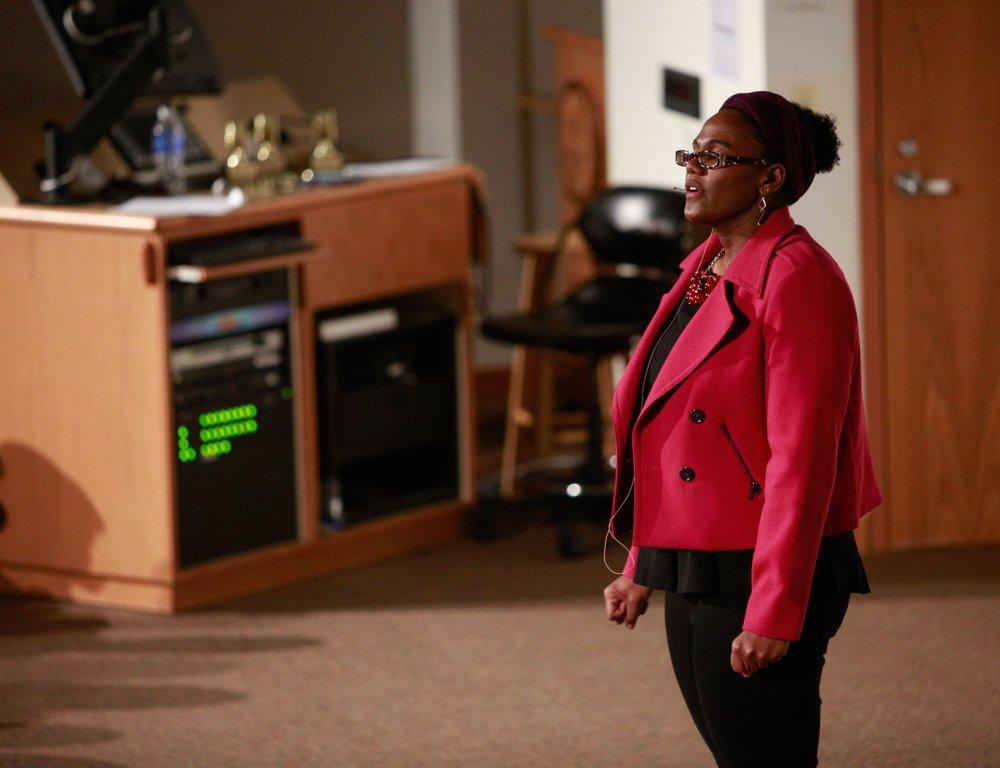The new art exhibit, “John Holmgren: Selected Works,” in the Lied Art Building’s Bryan Oliver Gallery consists of works that encourage students to start a dialogue about their relationship with the world around them.
Artist John Holmgren works at Franklin & Marshall College in Lancaster, Pennsylvania where he teaches a variety of courses on photography, mixed media and printmaking. roughout his art career, Holmgren has compiled an extensive portfolio consisting of five main series of work. Holmgren’s selected works at Whitworth portray photographs of the environment in various states of destruction combined with other art media such as screen printing to create works that show many perspectives on a location.
“[Holmgren] explores these places like an archaeologist would,” said senior lecturer and gallery director Lance Sinnema.
The first series of works, titled “Man Camps of North Dakota,” was a collaorative effort between Holmgren and the North Dakota Man Camp Project at the university of North Dakota in Grand Forks. The project documents temporary settlements, called man camps, on the Bakken oil field in North Dakota associated with fracking oil. Holmgren uses photographs from work sites and inkjet prints of archived documents to create pieces that demonstrate what life is like for miners living in these towns.
“Many of them are like ghost towns now,” Holmgren said.
Holmgren’s “Man Camp” project serves as a springboard for discussion about human trends of consumption. The camps depicted exist for the sole purpose of mining oil which is used for human consumption, although they also contain life.
“We need to come to grips with the damage that we are doing to the earth and to people,” Sinnema said. “The camps are not a very sustainable way of living in the same way that reliance on oil and gas is not sustainable.”
Holmgren’s interest in environmentalism was piqued by the dams on the Columbia River near his hometown of Lakewood, Washington. Another of his collections, “River Relations: A Beholder’s Share of the Columbia River Dams,” depicts the dams along the river. Holmgren, in collaboration with artist Nick Conbere, uses photos from the dams and Conbere’s drawings to construct pieces that show the history and the present state of the dams and their impact on the environment.
“We ask how aesthetic relationships can offer compelling ways to consider human constructions that alter natural forces, re-shaping the flow of a river,” Holmgren said.
The gallery also features Holmgren’s work from his collection “District of the Penguins.” This body of work utilizes photographs from Holmgren’s time stationed on the Polar Sea as a member of the U.S. Coast Guard.
“I am reappropriating my own archives of Antarctica,” Holmgren said. “These photos were never really intended to be artwork.”
Holmgren used innovative photography techniques to create intricately layered art.
Holmgren’s art exhibits human impact on the world and works to start a dialogue that may ask questions about how people can work to create change, Sinnema said.
“Today’s students are the ones that really need to lead the charge, to stand up and say we need a change,” Sinnema said. In order to help create a healthier relationship with resources, Sinnema recommended that all people be involved in researching and voting which work to tackle the issues.
Holmgren’s works will be on display until Jan. 29. The gallery is integral to the art department as it provides art students with a place to interact with a variety of art forms and collaborate with artists, Sinnema said.
While on campus during the opening of the art exhibit, Holmgren gave a lecture pertaining to his works and creative process. He also was able to spend some time with art students in constructive critique groups.
“This presents an opportunity for students to have an experience in the arts that is outside of their regular classes,” Sinnema said. “Art is about communication. It is about questioning and raising questions and getting people to start to think about stuff.”
The exhibition is an important part of the community at Whitworth, both in its impact on art students and in its message for students and the world as a whole, Sinnema said.
Contact Melissa Voss at mvoss19@my.whitworth.edu

